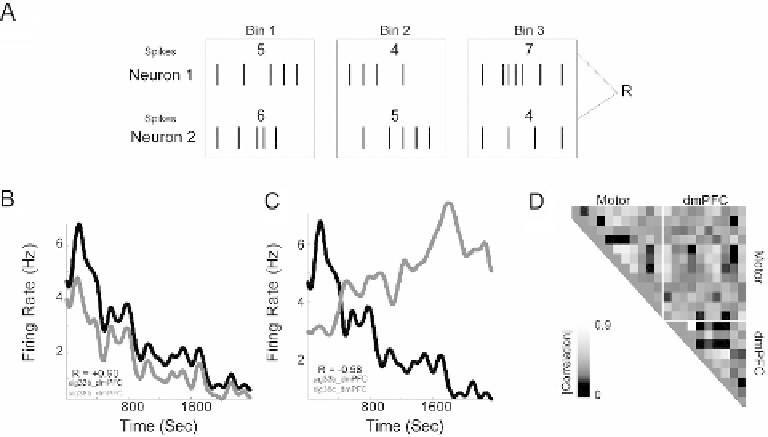Biomedical Engineering Reference
In-Depth Information
On the other hand, JPSTH is a flexible technique. Events
need not be behavioral; they may be in reference to a third neu-
ron or area
(29)
, and even continuous signals might be used in
this analysis. Thus, JPSTH is a standard way for assessing func-
tional interactions by examining the dynamics of correlations.
Both cross-correlation and JPSTH lend themselves to pair-wise
analysis of simultaneously recorded neurons.
7. Rate
Correlations
Neurons may show correlations in firing rates in the absence of
shared connections
(19, 21)
. Such interactions could occur over
time (within trials) or over trials (within bins). Either of these
types of functional interactions might correspond to functional
units in the nervous system, such as cell assemblies
(30)
. Because
spike trains are point processes, to compute correlations between
them, one must convert them to a time series by binning (rate
correlations / perievent analyses) (
Fig. 7.6A
). To compute rate
correlations:
1. Bin two raw spike trains of interest into a series of bin counts.
2. Compute Pearson's correlation coefficient of binned firing
rates.
3. Compare with what might be expected from random data.
Fig. 7.6. Rate correlations. (A) This analysis simply bins neurons' firing rates over the session, and examines the cor-
relation of neurons' binned firing rates over time. (B) Neurons could exhibit positive or (C) negative relationships. (D)
Rate correlations over the ensemble (absolute value plotted - we are interested in only the strength of correlation) reveal
several groups of neurons with strong rate correlations in both areas.

